Heritage vision and strategy
Updated 13 September 2024
We identify, safeguard, and celebrate the tangible and intangible assets, objects, and memories of the UK’s civil nuclear industry, the people who worked in it, and the communities that supported it
Foreword
I am delighted to present the Heritage Vision and Strategy for the NDA group.
This strategy has been created in collaboration with NDA group heritage specialists, and in consultation with others from the heritage sector, to maximise our ability to identify, safeguard and celebrate the history and cultural heritage of the nuclear industry.
The benefits of preserving, safeguarding, and celebrating nuclear heritage are many, ranging from learning lessons of the past so we can support decommissioning and future nuclear developments, to realising significant social value potential by connecting with local communities and other stakeholders.
The scope covers all UK civil nuclear establishments from the early 1940’s through to the present day, with provision for future additions and focuses on both tangible and intangible assets, objects, and memories. Nucleus, the Nuclear and Caithness Archives in Wick, Caithness provides an opportunity and focal point for preserving and safeguarding these, whether directly or through a hub and spokes approach.
Capturing the legacy of the nuclear industry will enrich the NDA mission and help us to deliver our outcomes more effectively.
David Peattie, FREng HonFNucl
Group Chief Executive Officer
Executive summary
The UK’s civil nuclear industry has so far lacked a comprehensive strategy for heritage preservation, and the safeguarding of its heritage assets beyond those covered by statutory legislation.
This strategy document provides clarity and direction for the Nuclear Decommissioning Authority (NDA) group to identify, safeguard, and celebrate the tangible and intangible assets, objects, and memories of the nuclear industry, the people who worked in it, and the communities that supported it.
It provides a framework for how the NDA group will work collaboratively, and engage with local communities and key stakeholders, to achieve value and benefits in line with delivering the NDA mission.
The scope covers all UK civil nuclear establishments from the early 1940’s through to the present day, with provision for future additions.
The implementation approach focusses on process, people, governance, and technology in alignment with the NDA’s overall vision and strategy, and forms part of the suite of strategies within the Information Governance function, seeking to realise benefits for the achievement of the NDA mission as well as for the benefit of local communities.
Social value is a key focus of this strategy, hence the flexible approach to ensure opportunities with present and future generations can be maximised.
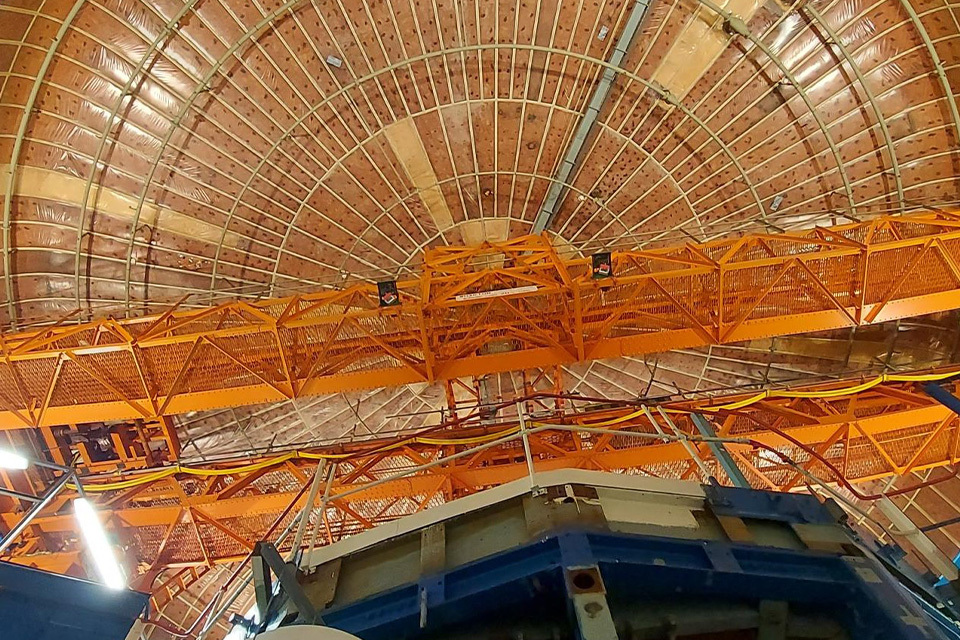
DIDO Reactor building
Our vision
We safeguard and celebrate the tangible and intangible assets, objects and memories of the UK’s civil nuclear industry, the people who worked in it and the communities that supported it.
Introduction
The purpose of the NDA group Heritage Strategy is to provide clarity and direction for identifying, safeguarding, and celebrating the UK’s civil nuclear industry. It demonstrates the NDA group’s commitment to heritage, supporting, reinforcing, and aligning with the NDA’s overall vision and strategy, and forming part of the suite of strategies within the Information Governance function.
The strategy outlines the value of heritage to the nuclear industry, stakeholders and communities, and describes the contribution heritage makes to delivering the NDA mission. It also describes the implementation approach which will be used to inform and enable decision making about heritage and provides a framework on how the NDA group will work collaboratively to achieve these goals.
Culture plays a central role in contemporary societies and includes arts, beliefs, customs, institutions, inventions, language, technology, and values. The preservation of cultural heritage is central to protecting the significance of place and a sense of who we are.
Identification of nuclear cultural heritage can take different forms: collecting, storing, and archiving records, preserving, and caring for objects, documenting, and safeguarding sites and recording intangible practices. Thus, it is an enduring process during which social and knowledge-based values are shaped, recorded, and transmitted to the future.
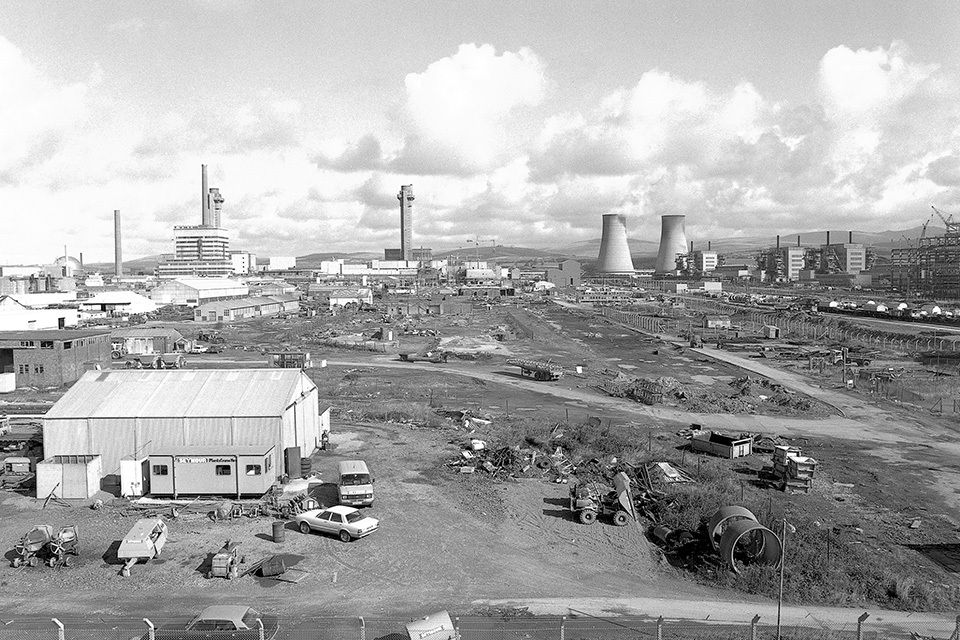
Windscale site in 1950's
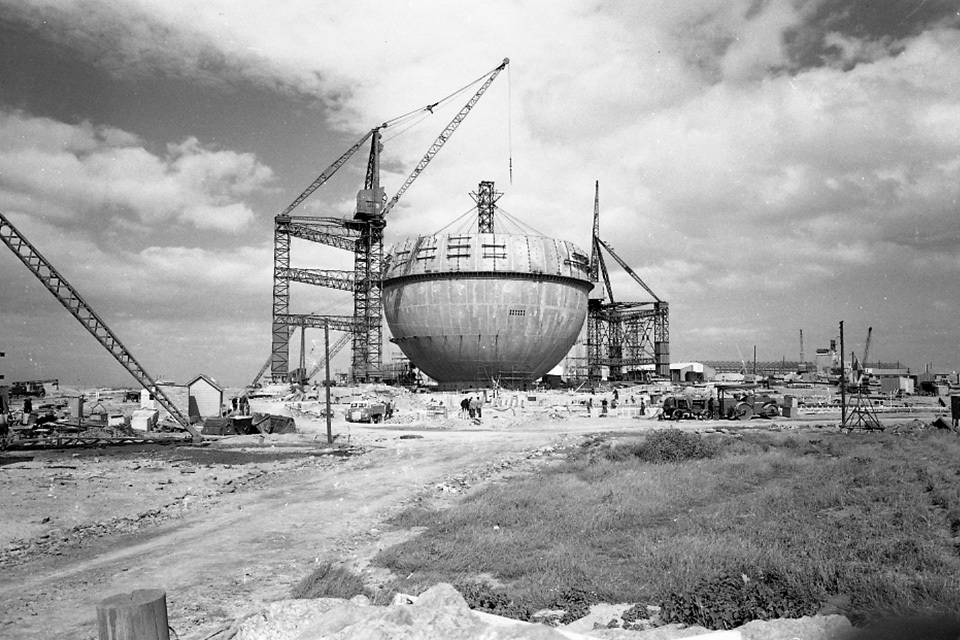
Dounreay Sphere 1956
Cultural heritage embraces the values of openness, access, and participation. It can provide an access point for communities in understanding the work of the NDA, for example, our long-term decommissioning programmes, prevention of loss of knowledge, and potentially, new nuclear build and long term geological disposal.
The NDA is a non-departmental public body of the Department for Energy Security and Net Zero (DESNZ) and was formed by the Energy Act 2004. It is the custodian of the United Kingdom’s civil nuclear heritage, a legacy that dates from the 1940s. The NDA is directly responsible for 17 sites which include former research establishments, industrial production facilities and power stations. The NDA’s priority is to decommission the UK’s nuclear sites in a safe, secure, and environmentally acceptable manner, while providing value for money to the taxpayer.
Nucleus, the Nuclear and Caithness Archives in Wick, Caithness provides a focal point and opportunity for preserving and safeguarding heritage, whether directly or through a hub and spokes approach. A Heritage Officer delivers components of the strategy, working with colleagues from across the NDA group and beyond. A panel of national heritage organisations from England, Scotland, and Wales meet on a regular basis to provide specialist support and explore collaboration opportunities.
-
Civil nuclear heritage encompasses both cultural and industrial values. UNESCO’s definition of cultural heritage (1972) refers to: The legacy of physical artefacts and intangible attributes of a group or society that are inherited from past generations, maintained in the present and bestowed for the benefit of future generations.
-
The International Committee for the Conservation of Industrial Heritage (TICCIH) defines industrial heritage (2003) as: The remains of industrial culture which are of historical, technological, social, architectural, or scientific value.

Dounreay Open Day 1957
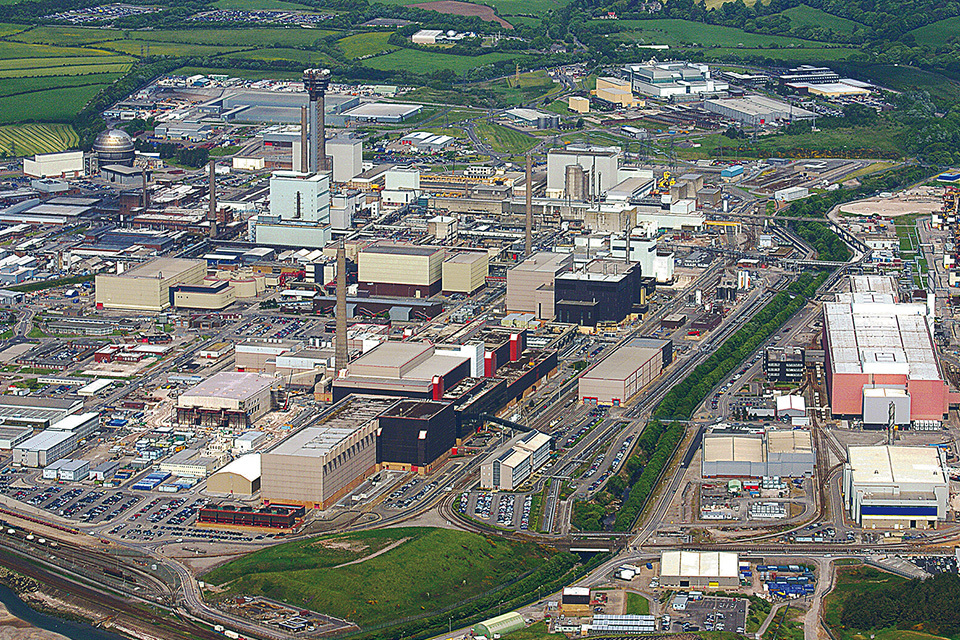
Sellafield overview today

HM Queen Elizabeth II visit to Sellafield 1956
Scope
The scope of this strategy includes both tangible (e.g. records and objects) and intangible (e.g. social, and oral history) assets, objects, and memories.
The cultural heritage scope covers all UK civil nuclear establishments from the early 1940s through to the present day, with provision for future additions. It will also cover a range of other UK sites such as the former Imperial Chemical Industries (ICI) sites and Ministry of Defence (MoD) sites, where they overlapped with civil nuclear developments.
This geographical spread of sites provides a challenge in developing an aligned strategy, ranging from Dounreay in the north, to Dungeness in the south, with fifteen sites in between. In addition, the preservation of cultural assets has varied from site to site depending on the level of interest shown by individuals. Some sites have dedicated areas for object storage, whereas some sites may have retained virtually nothing.
The strategy must be mindful of the current economic climate and the budgetary restrictions faced by all government departments, putting value for money for the taxpayer at the front of decision making, and seeking opportunities for external funding and partnership working.
The Heritage Strategy presented in this document covers the 3-year period from April 2023 to March 2026 and will be reviewed regularly.
Examples of artefacts and social history heritage

Aluminium model of UK Atomic Energy Authority coat of arms

Dounreay apprentices taking part in the 1990 Thurso Gala

Dounreay stone sculpture relocated at Nucleus archive
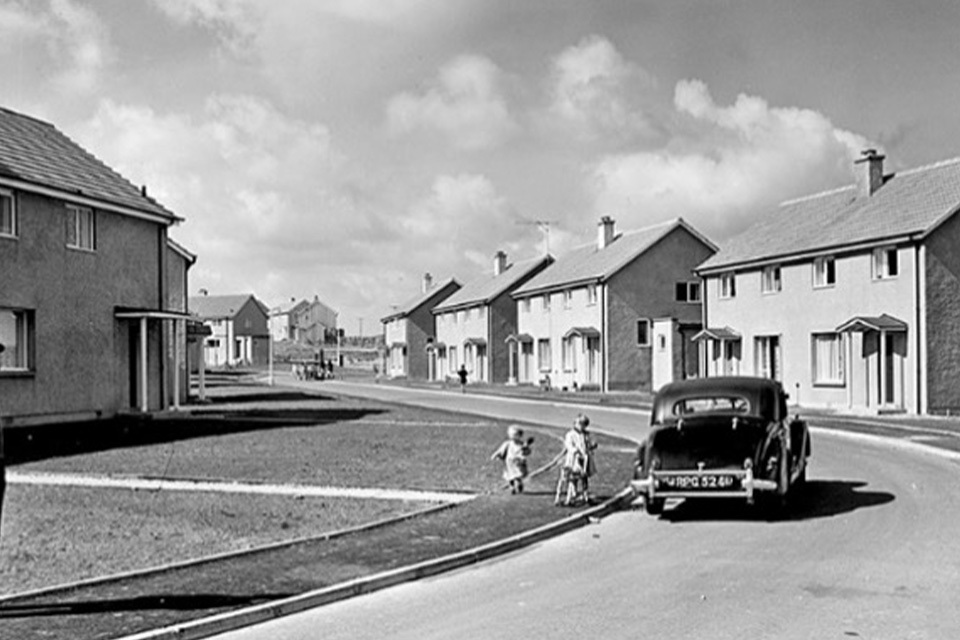
UK Atomic Energy Authority housing in Thurso for Dounreay workers
Our heritage vision and mission
Our heritage vision
To identify, safeguard and celebrate the tangible and intangible assets, objects, and memories of the UK’s civil nuclear industry, the people who worked in it and the communities that supported it.
Our heritage mission
Through enhancing knowledge and understanding of our civil nuclear industry’s history and cultural heritage, we aim to protect and conserve it, both now and for future generations.
We ensure that our nuclear heritage is captured, managed, safeguarded, and valued in line with mutually agreed national stakeholder expectations and in support of NDA’s strategic goals and responsibility to society at large.
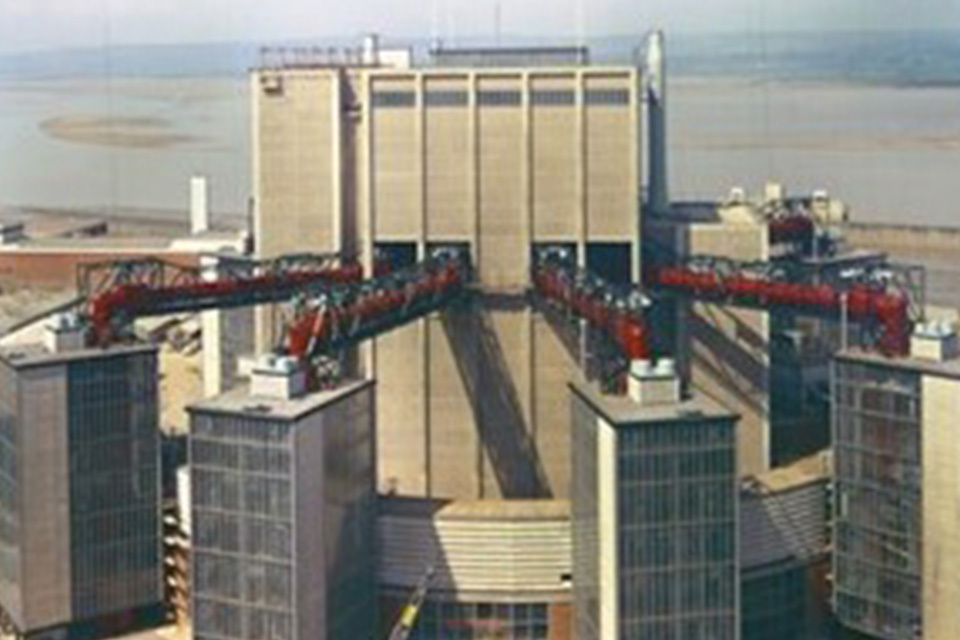
Berkeley, 1960's
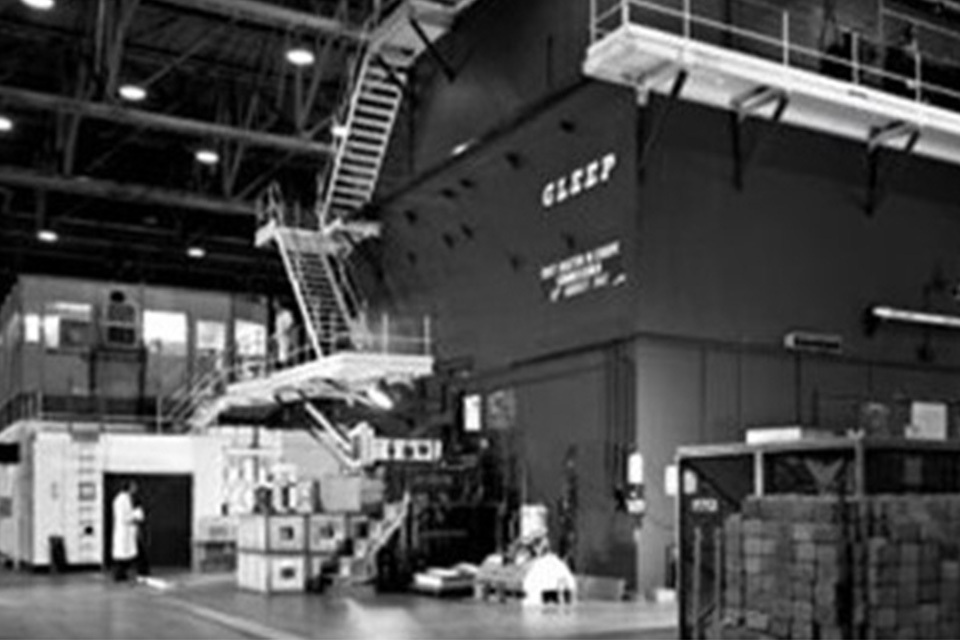
GLEEP Harwell, 1947
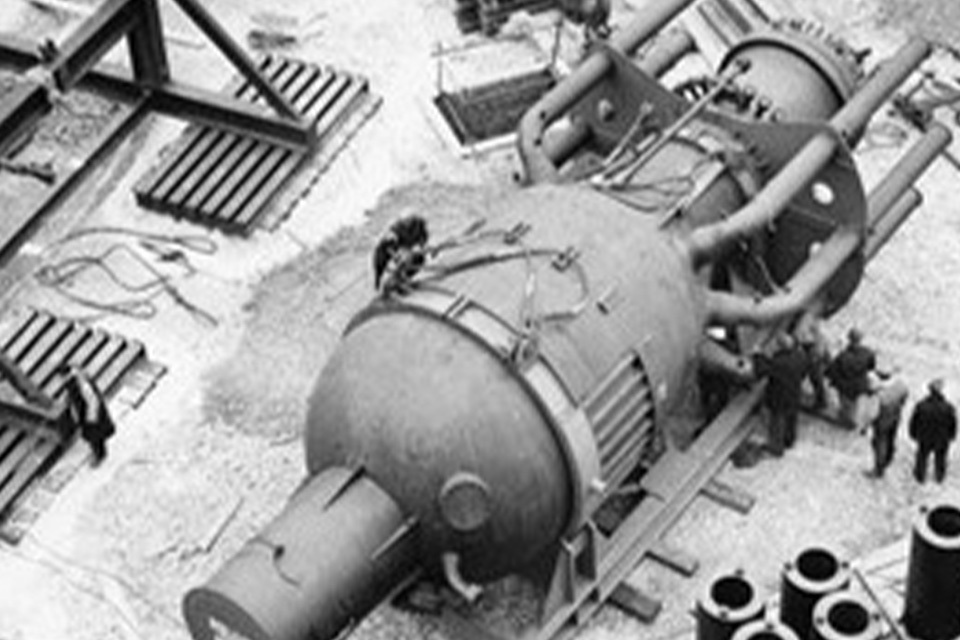
DRAGON Winfrith, 1960's

PFR Reactor core construction, 1970's
Strategic objectives and the benefits we will realise
Our strategic objectives are grouped around three key areas:
-
Identify - heritage assets that have historic significance.
-
Safeguard - heritage assets.
-
Celebrate - our nuclear heritage through engagement with communities
The benefits
-
Engagement within the industry, with communities and within wider society to understand and appreciate the contribution the civil nuclear industry has made to the UK.
-
Learnings to improve planning of decommissioning activities and reduce risks, and to support future nuclear developments such as new nuclear builds, research and development, long term decommissioning programmes and a Geological Disposal Facility (GDF).
-
Primary sources preserved for future researchers. Educational resources developed for teachers, historians, stakeholders, and the general public to inspire and educate future generations.
-
Contribution to the UK tourism industry enhancing economic value to local communities.
-
Showcasing the UK’s nuclear scientific and engineering achievements and the socio-economic benefits that have been realised to date.
-
Contribution to our sense of connectedness and widen our social networks, improving wellbeing and mental health through collaboration with creative arts projects.
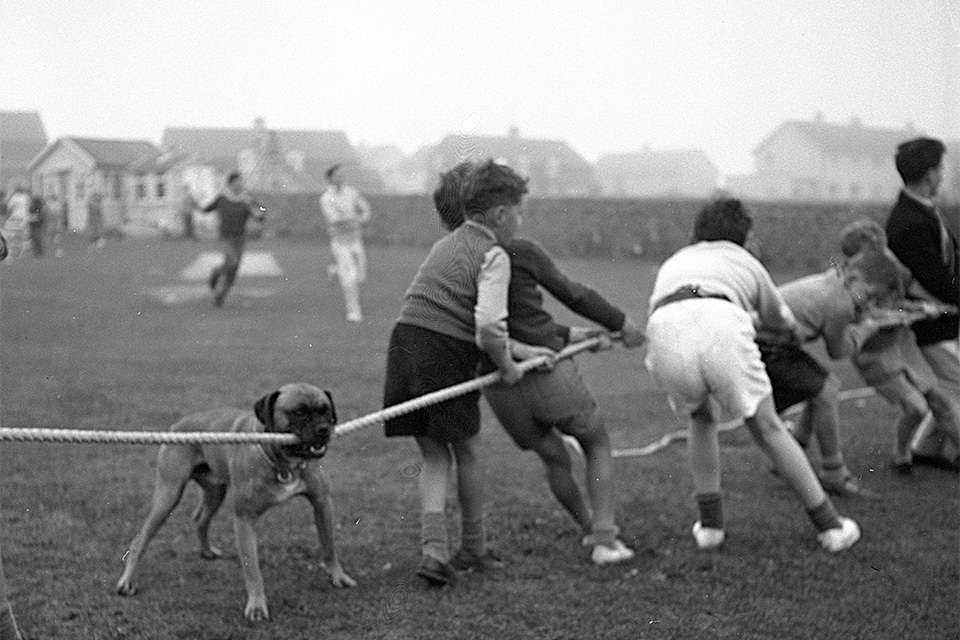
Dounreay Childrens’s Sports, 1958
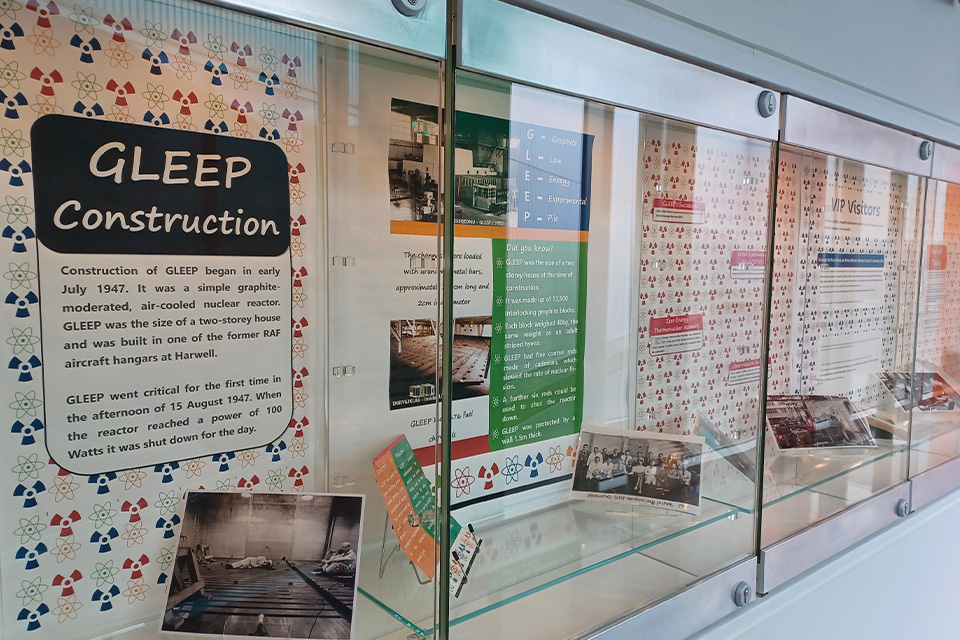
The GLEEP Exhibition at Nucleus, 2023
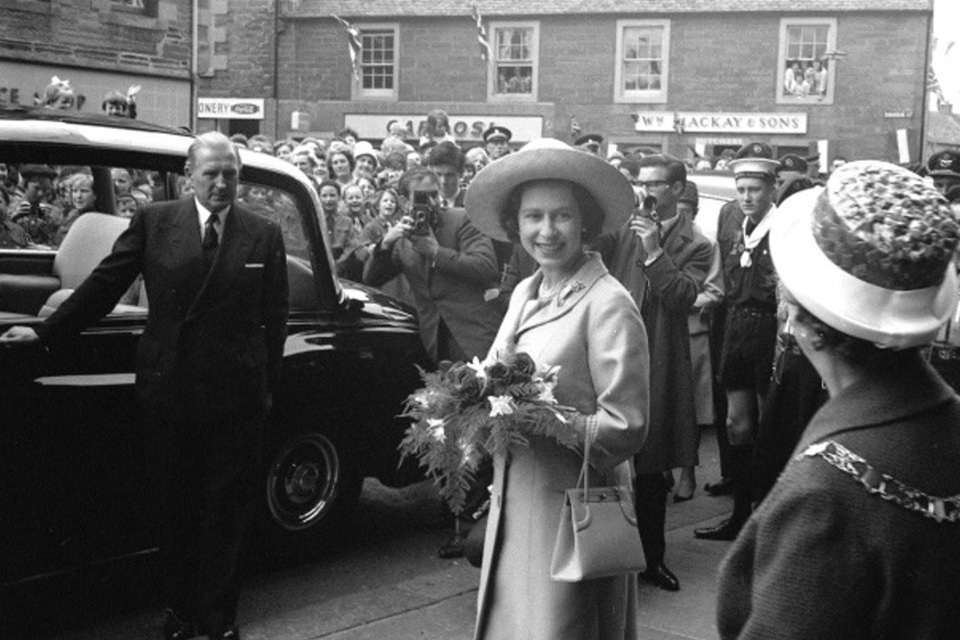
Visit of HM Queen Elizabeth II to Thurso, 1964
Social value and drivers
Social value and the benefits it derives is an important focus in the NDA and fundamental to delivering a successful heritage strategy.
The Energy Act (2004) requires the NDA to put in place measures which include giving encouragement and support to activities that benefit the social or economic life of communities living near our sites.
The NDA’s Local Social and Economic Impact Strategy, effective from July 2020, emphasises that decommissioning activities should benefit local communities and must provide a positive legacy once work is completed. Preserved heritage has become an anchor of the UK and global tourism industry and is a major contributor of economic value to local communities. There are opportunities through identifying, preserving and celebrating nuclear heritage to benefit local communities in this way.
Other key drivers/requirements relating to nuclear cultural heritage are
- National Planning Policy Framework 2012, updated 2019. This requires developers to “understand the significance of any heritage assets to be lost wholly or in part in a manner proportionate to their importance and to make this evidence and any material generated publicly accessible.”
- Protocol of the Care of the Government Historic Estate 2017, by Historic England. This is mandatory for Government departments and its agencies and sets out a consistent, coordinated approach to protecting historic assets, particularly listed buildings, and monuments.
- Nuclear Reactors (Environmental Impact Assessment for Decommissioning) Regulations 1999, amended 2006. This requires cultural impact and landscape assessment.
- The Town and Country Planning (Environmental Impact Assessment) Regulations 2017. Covers material assets, cultural heritage, and landscape.
- This requires that bodies responsible for Public Records, select and transfer records worthy of permanent preservation to The National Archives (TNA) or a Place of Deposit (approved by the Secretary of State).
- The Historic Environment Policy for Scotland (HEPS) Policy 3, requires that ‘Plans, programmes, policies and strategies, and the allocation of resources, should be approached in a way that protects and promotes the historic environment.’ Further guidance is available via HES’s ‘Managing Change in the Historic Environment: Asset Management (2019)’.
- Additionally, Scotland’s strategy for the historic environment, ‘Our Place in Time’, requires that - ‘All public bodies take seriously the expectation that the information they produce is made available to the public.’ (OPIT p.14).
- Managing historic character in Wales, May 2017, supplements Planning Policy Wales and Technical Advice Note 24: The Historic Environment. It encourages the best use of the historic environment to improve the social, economic, environmental, and cultural well-being. It also focuses on those aspects of local heritage that have considerable value for local communities.
British Council, 2017
When people engage with, learn from, value and promote their cultural heritage, it can contribute to both social and economic development. Heritage in this way can be a source of sustainability, a way to embed growth in the fabric of society and to celebrate the past in today’s evolving world.
Implementation approach
People
-
Support a culture across the UK civil nuclear industry that values historic and heritage significance.
- Engage and work in partnership with all stakeholders to establish mutual expectations. * Work collaboratively with NDA group, stakeholders, and communities to deliver positive heritage outcomes.
- Establish heritage supporting roles within the NDA group including identifying Heritage Champions for each site.
- Encourage and support the NDA group Operating Companies to engage with their local communities and key stakeholders on Heritage topics.
Processes
- Establish a framework to enable the NDA group to capture, preserve and celebrate nuclear cultural heritage.
- Provide a common approach to managing heritage across all aspects of the NDA group and other UK nuclear-related interests.
- Provide guidance to inform identification and safeguarding of assets across the Group.
Governance
- Ensure appropriate governance to deliver heritage outcomes and develop a documented governance framework.
- There are two main bodies, overseen by the NDA group, that will support heritage governance:
- A Heritage Advisory Panel of representatives from across the NDA group and relevant national organisations, convened by the NDA Heritage Officer.
- A Heritage Steering Group with representatives from across the NDA Group reporting to the NDA Information Governance Officer’s (IGO) steering group which is accountable to senior executive.
Technology
- Deliver heritage outcomes in line with the NDA digital strategy.
- Commit to making object collections and archives more accessible through continuing digitisation.
- Use appropriate digital tools to communicate and collaborate with key internal and external stakeholders
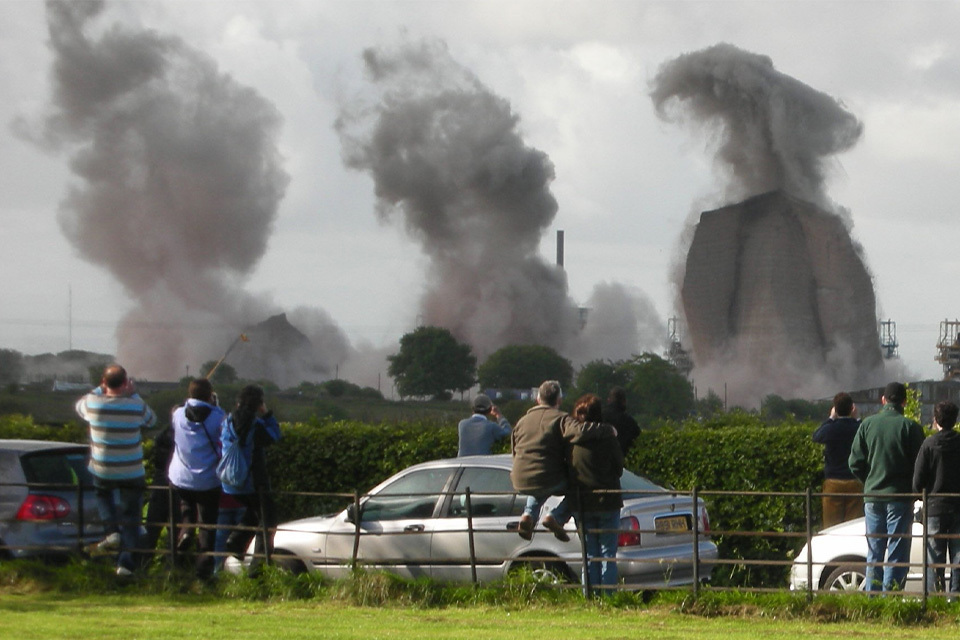
Chapelcross cooling towers demolition, 2007
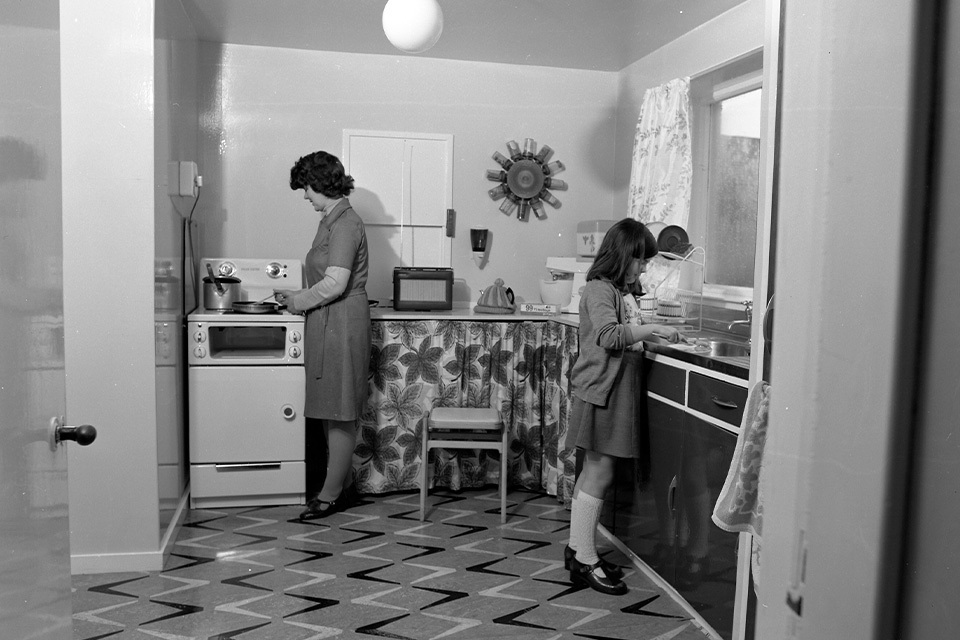
Kitchen in Pennyland Estate, Thurso, 1978
Case studies
Dounreay community project
The Dounreay Community Heritage Project (DCHP), was a collaboration between Nucleus, the Nuclear and Caithness Archives, Dounreay, and High Life Highland. It involved gathering ex-Dounreay employees over tea and biscuits at the North Coast Visitors Centre and supplying them with photographs from the Dounreay archive. The project was designed to capture metadata for Nucleus records and reach out to the community by providing retired Dounreay staff with the opportunity for a social get together. The initial session focused on Atomic Housing. These ‘atomic houses’ were built to attract and accommodate skilled workers to work at Dounreay in the 1950s. Following the success of the first session, a further 3 sessions were run, and the project is to be repeated at Sellafield and Warrington.
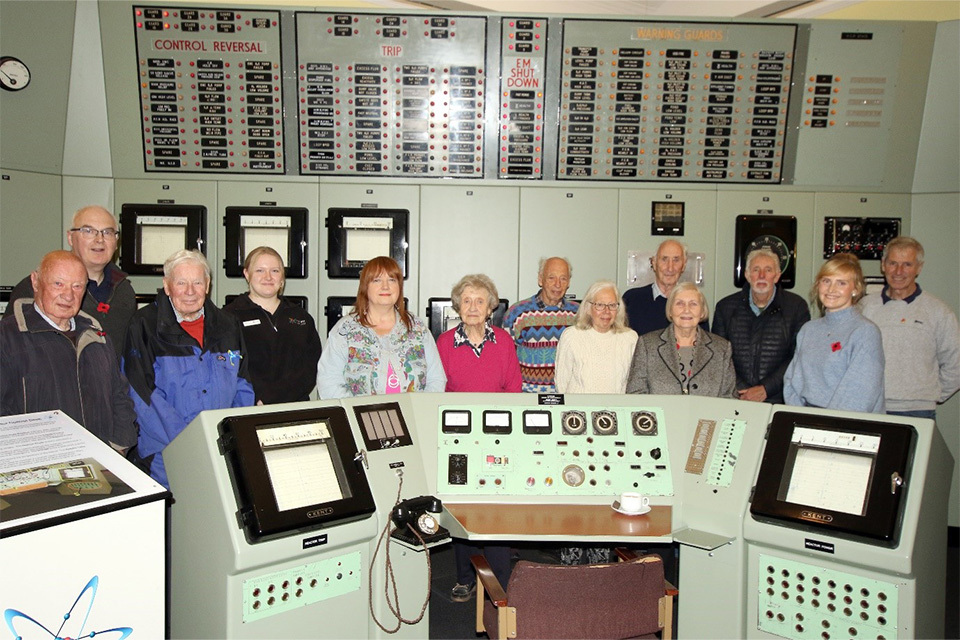
Participants with the Dounreay Materials Testing Reactor control room at the North Coast Visitor Centre
Nucleus interpretation panels
In the summer of 2022 eight new interpretation panels were erected at Nucleus, the Nuclear and Caithness Archives to provide visitors and staff with information about the nuclear industry and to enhance the approach to the building.
Each panel describes the events of a particular decade, selected and compiled by representatives from across the NDA group. Feedback from visitors to Nucleus has been very positive with comments such as ‘the panels make Nucleus feel more like a heritage destination’, and ‘the new monoliths make the walkway very interesting, and the lights look amazing in the dark’.
Simon Tucker, NDA Archives Limited Managing Director says, ‘We are delighted to be able to showcase the origins of the civil nuclear industry with staff and visitors to Nucleus in such an interesting and inspiring way. These panels superbly compliment the architectural drama of the building whilst at the same time informing people about our industrial history and I am very grateful to the team that has worked on this’.
The panels are one of many deliverables outlined in this Heritage Strategy supporting the identifying, safeguarding and celebrating of the civil nuclear industry’s history and cultural heritage, and contributing to delivery of the NDA mission.
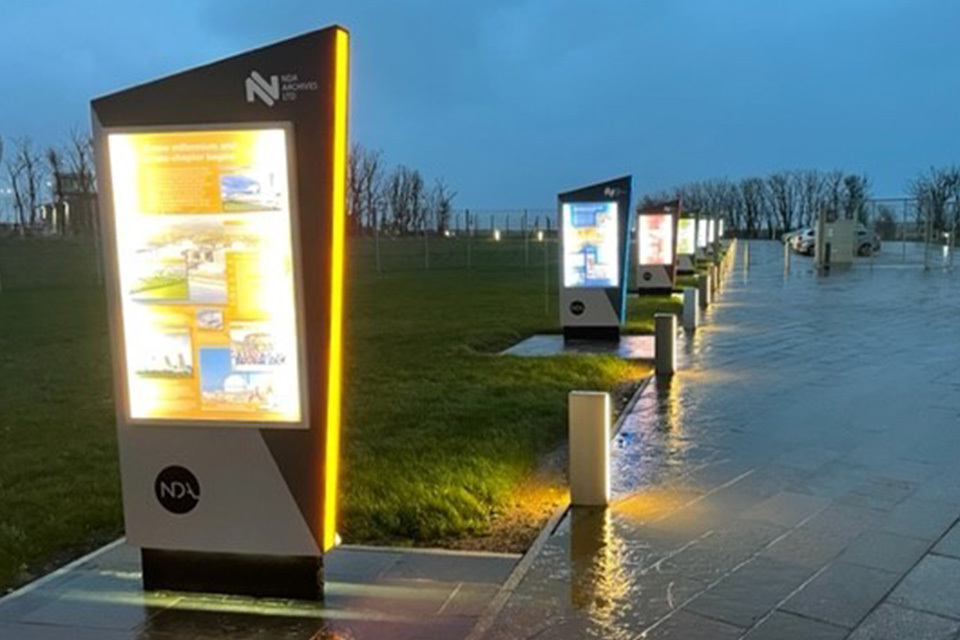
The interpretation panels at Nucleus
GCSE history workshops
The NDA Heritage Officer is currently working in partnership with Sellafield Information Management to develop a history workshop for local schools. Supporting the Cold War module in the current GCSE syllabus, a number of activities based on documents from the Sellafield archive will illustrate the role played by Sellafield in this crucial period of world history.
